
Quinoa milk: Properties and our new homemade milk recipe
Quinoa is a small seed of Andean origin that is highly valued for its nutritional properties. It can be consumed in many different ways, including as a plant milk. A few years ago, we published a recipe for homemade quinoa milk using raw grains. We’ve been experimenting again, this time with flaked quinoa, and we’ve taken the opportunity to gather together all our recipes and knowledge about quinoa in this article. I hope you find it interesting and useful!
Properties of homemade quinoa milk
 Quinoa milk is lactose and gluten-free, making it ideal for vegans, vegetarians, people with lactose intolerance, and celiacs.
Quinoa milk is lactose and gluten-free, making it ideal for vegans, vegetarians, people with lactose intolerance, and celiacs.
Quinoa is an easily digestible and extraordinarily nutritious seed. Compared with other cereals (rice, wheat, barley, oats, etc.), it’s richer in magnesium, phosphorus, potassium, iron, fiber, and vitamin E. It contains 8 essential amino acids as well as many others which are not essential to the human body.
Among the amino acids that can be found in quinoa are lysine (important for brain development) and arginine and histidine, which are vital for development during childhood. It’s also rich in methionine and cystine and at the same, it’s low in fat, so it’s a good complement to other cereals and/or legumes such as beans.
Overall, quinoa contains an exceptional combination of proteins, fats, and carbohydrates (mainly starch). It’s a natural cholesterol regulator and helps to relieve stress thanks to its high natural fiber content.
Homemade quinoa milk recipe
The high protein content of quinoa milk makes it an excellent dairy milk substitute/alternative. To make quinoa milk using a Vegan Milker, you can use quinoa in either grain or flake form, whichever is more convenient for you. We’ll start with the recipe for quinoa milk using flakes because it’s the simplest version, and then I will explain how to make milk from raw grains.
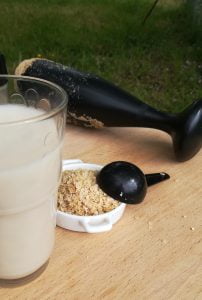 Ingredients: Quinoa milk using flakes
Ingredients: Quinoa milk using flakes
- 50g quinoa flakes
- 3 cups of water (750ml)
- a pinch of salt
- Your preferred sweetener (date, syrup, cane sugar)
Method: Homemade quinoa milk using flakes
- Add a cup of hot water (60ºC) to the Vegan Milker container.
- Next, place the filter into the container with the rest of the ingredients and blend the mixture for one minute using a hand blender.
- Add the remaining water and beat again to make sure the mixture is smooth.
- To finish the process, lift the filter out of the milk and use a mortar to press the pulp to squeeze out the last drops.
- Let the mixture cool, then refrigerate.
The leftover pulp should be left to dry on a plate and can be used as an ingredient in vegan burgers or energy bars.
Ingredients: Raw grain quinoa milk
- 50g quinoa seed (any variety; white, red, black, golden…)
- 3 cups of water (750ml)
- a pinch of salt
- Recommended: add natural flavorings such as cocoa, turmeric, cinnamon, ginger, lemon zest… whatever you like!
 Method: Homemade quinoa milk using raw grains
Method: Homemade quinoa milk using raw grains
The raw grains recipe is similar to the flakes recipe, but there are a few small details to keep in mind.
- Before making the milk, we recommend that you to wash the seeds very well by rubbing them under running water to get rid of the saponins in the skin and thus avoid possible diarrhea and also minimize the bitter taste.
- Add a cup of hot water (60ºC) to the Vegan Milker container.
- Next, place the filter into the container with the rest of the ingredients and blend the mixture for one minute using a hand blender. Because we’re working with small, hard seeds, you will need to persist with the blender in turbo position, until they are properly crushed (this can take around two minutes).
- Add the remaining water and beat again to make sure the mixture is smooth. We’ll skim off the foam in during the final step.
- Lift the filter out of the milk and use a mortar to press the pulp to squeeze out the last drops.
- Transfer the milk to a saucepan and cook for 10-15 minutes over medium heat, stirring to prevent it from sticking to the bottom. The longer the cooking time, the sweeter the milk will be.
- Whilst cooking the milk, skim off the foam and add the spices, flavorings, or natural sweeteners to taste.
The leftover pulp from the quinoa milk can be used to enrich any vegetable purée or soup: just make sure to add it during the last 10 minutes of cooking to conserve all the nutrients.
 Tricks and alternatives
Tricks and alternatives
- Quinoa milk is valued for its nutritional properties but not for its taste. Let’s just say that it is not very pleasant because it has a wild herbaceous touch that takes some getting used to. To make it more palatable, you can cook the milk in a saucepan over medium heat for 10 minutes, stirring constantly to prevent it from sticking. The longer the cooking time, the sweeter the quinoa milk will be.
- Another non-cooking option to balance the strong flavor of quinoa is to substitute the water for a concentrated spice or aromatic herb infusion: ginger, massala, star anise, etc. This trick can be applied to both versions of the recipe.
- If you’d like some ideas for what to do with the leftover quinoa pulp, take a look at the PULPS section of this blog where you will find plenty of healthy and easy-to-make ideas.
Quinoa facts
Quinoa is a pseudocereal of Andean origin, found most commonly in Bolivia, Ecuador, Peru, Chile, Argentina, and Colombia. It can be grown anywhere from sea level to 4,000 meters above sea level, so it adapts very well to different climates and terrains. Indigenous peoples called it the “mother grain” and consider it a sacred seed.
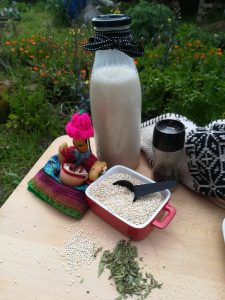 There is a great diversity of quinoa seeds; white, red, black, brown… But the massive commercialization of the crop endangers the biodiversity of some of these varieties. The year 2013 was the international year of quinoa. Once the seed became famous, trade spread worldwide, reaching stratospheric prices, which attracted companies with aggressive commercial practices to take over the quinoa trade. In this way, quinoa became an unaffordable grain, even for the families that grew it. White and golden quinoa are the most widely sold, which creates a tendency towards a monoculture, ruining the plant’s biodiversity and causing the disappearance of other, less-valued varieties.
There is a great diversity of quinoa seeds; white, red, black, brown… But the massive commercialization of the crop endangers the biodiversity of some of these varieties. The year 2013 was the international year of quinoa. Once the seed became famous, trade spread worldwide, reaching stratospheric prices, which attracted companies with aggressive commercial practices to take over the quinoa trade. In this way, quinoa became an unaffordable grain, even for the families that grew it. White and golden quinoa are the most widely sold, which creates a tendency towards a monoculture, ruining the plant’s biodiversity and causing the disappearance of other, less-valued varieties.
For ecological principles linked to food sovereignty, I’d like to take this moment to emphasize the importance of feeding ourselves with local products that are grown in our area, and avoiding the consumption of “star” foods that are imported from remote places, disrupting the natural ecological balance of that place and exposing its people to unethical business practices.
Greetings to all our South American followers. We would be delighted to receive your comments and suggestions about the different uses of quinoa. I am sure that you will know phenomenal traditional and popular recipes that will afford us an enriching insight into local cultural treasures.

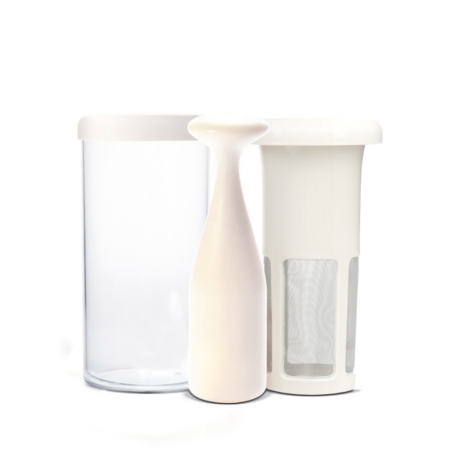
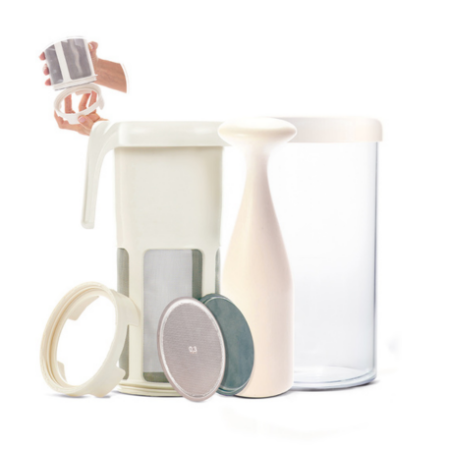
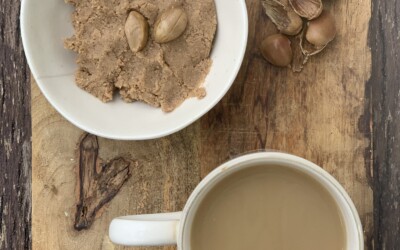
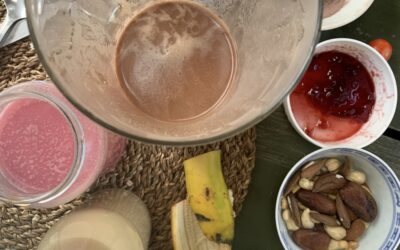
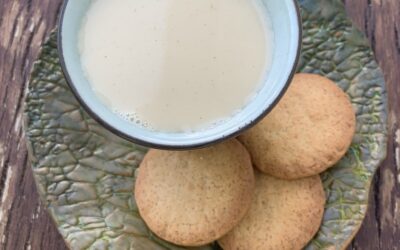
0 Comments
Trackbacks/Pingbacks